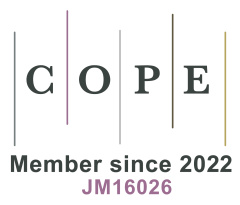Biomechanics-inspired analysis of the recognition function of recurrent neural networks in primary school math homework under low carbon background
Abstract
In the traditional education assessment landscape, the manual grading of subjective exam questions poses significant challenges. The labor-intensive nature of this process and the potential for human error can negatively impact teaching and learning outcomes. As society transitions towards a low-carbon future, there is a pressing need to reform educational evaluation methods, reduce paper-based exams, and leverage advanced intelligent technologies. Inspired by the principles of biomechanics, this research introduces a novel image-based handwritten text recognition algorithm powered by recurrent neural networks, specifically designed for the automated scoring of primary school mathematics subjective questions. Drawing insights from the human visual and cognitive systems, the proposed approach mimics the hierarchical and adaptive nature of biological information processing to tackle the complexities inherent in handwritten text detection, recognition, and understanding. The study first constructs a comprehensive dataset of real primary school math exam answer sheets, capturing the diverse range of handwriting styles and mathematical notations. This dataset serves as a robust training and evaluation platform, akin to the diverse sensory inputs that biological systems process. The recurrent neural network architecture employed in this work exhibits biomimetic properties, such as the ability to dynamically process sequential information and adaptively refine its internal representations, much like the human brain's neural networks. This allows the algorithm to effectively handle the contextual cues and structural patterns present in handwritten mathematical responses, enabling accurate recognition and interpretation. Rigorous comparative and ablation experiments were conducted to assess the performance of the proposed algorithm. The results demonstrate high accuracy in recognizing and interpreting handwritten subjective responses, showcasing the practical value of this biomechanics-inspired approach. These findings align with the study's overarching goal of developing resource-saving and environmentally-friendly education evaluation systems, paving the way for the widespread adoption of intelligent technologies in the assessment of subjective questions. By drawing inspiration from the elegant and efficient information processing mechanisms observed in biological systems, this research contributes to the advancement of intelligent handwritten text recognition, ultimately supporting the transition towards a more sustainable and equitable educational landscape.
References
1. Epshtein B, Ofek E, Wexler Y. Detecting text in natural scenes with stroke width transform, 2010 IEEE Computer Society Conference on Computer Vision and Pattern Recognition, San Francisco, CA, USA, 2010, pp. 2963-2970.
2. Matas J, Chum O, Urban M, Pajdla T. Robust wide-baseline stereo from maximally stable extremal regions, Image and Vision Computing, 2004, 22(10), 761-767.
3. Dalal N, Triggs B. Histograms of oriented gradients for human detection, 2005 IEEE Computer Society Conference on Computer Vision and Pattern Recognition (CVPR’05), San Diego, CA, USA, 2005, pp. 886-893
4. Li H, Doermann D, Kia O. Automatic text detection and tracking in digital video, in IEEE Transactions on Image Processing, 2000, 9(1), 147-156.
5. Zhang Z, Shen W, Yao C, Bai X. Symmetry-based text line detection in natural scenes, 2015 IEEE Conference on Computer Vision and Pattern Recognition (CVPR), Boston, MA, 2015, pp. 2558-2567.
6. Huang W, Lin Z, Yang J, Wang J. Text localization in natural images using stroke feature transform and text covariance descriptors, 2013 IEEE International Conference on Computer Vision, Sydney, NSW, Australia, 2013, pp. 1241-1248.
7. Lukas N, Matas J. A method for text localization and recognition in real-world images. In: Kimmel, R., Klette, R., Sugimoto, A. (eds) Computer Vision – ACCV 2010. ACCV 2010. Lecture Notes in Computer Science, 2010, vol. 6494. Springer, Berlin, Heidelberg.
8. Zhi T, Huang W, He T, Qiao Y. Detecting text in natural image with connectionist text proposal network. In: Leibe, B., Matas, J., Sebe, N., Welling, M. (eds) Computer Vision – ECCV 2016. Lecture Notes in Computer Science, 2016, vol. 9912. Springer, Cham.
9. Alex G, Schmidhuber J. Framewise phoneme classification with bidirectional LSTM and other neural network architectures. Neural Networks, 2005, 18(5-6), 602-610.
10. Liao M, Shi B, Bai X, et al. Textboxes: A fast text detector with a single deep neural network. Proceedings of the AAAI Conference on Artificial Intelligence, 2017, 31(1), 4161-4167.
11. Liu W, Anguelov D, Erhan D, et al. Ssd: Single shot multibox detector. In: Leibe, B., Matas, J., Sebe, N., Welling, M. (eds) Computer Vision – ECCV 2016. Lecture Notes in Computer Science, 2016, vol. 9905. Springer, Cham.
12. Liao M, Shi B, Bai X. Textboxes++: A single-shot oriented scene text detector. IEEE transactions on image processing, 2018, 27(8), 3676-3690.
13. Shi B, Bai X, Belongie S. Detecting oriented text in natural images by linking segments. 017 IEEE Conference on Computer Vision and Pattern Recognition (CVPR), Honolulu, HI, USA, 2017, pp. 3482-3490.
14. He P, Huang W, Qiao Y, et al. Reading scene text in deep convolutional sequences. Proceedings of the AAAI conference on artificial intelligence, 2016, 30(1), 3501-3508.
15. Graves S, Fernández F, Gomez JS. Connectionist temporal classification. In Proceedings of the 23rd International Conference on Machine Learning. 2006, 369-376
16. Shi X, Bai X, Yao C. An end-to-end trainable neural network for image-based sequence recognition and its application to scene text recognition, in IEEE Transactions on Pattern Analysis and Machine Intelligence, 2017, 39(11), 2298-2304.
17. Liao M, Pang G, Huang J, et al. Mask TextSpotter v3: Segmentation proposal network for robust scene text spotting. In: Vedaldi, A., Bischof, H., Brox, T., Frahm, JM. (eds) Computer Vision – ECCV 2020. Lecture Notes in Computer Science, 2020, 12356. Springer, Cham.
18. Liu Y, Chen H, Shen C, et al. Abcnet: Real-time scene text spotting with adaptive bezier-curve network. In Proceedings of the IEEE/CVF Conference on Computer Vision and Pattern Recognition, 2020.
19. Wang W, Xie E, Li X, et al. Shape robust text detection with progressive scale expansion network. In Proceedings of the IEEE/CVF Conference on Computer Vision and Pattern Recognition, 2019.
20. Liao M, Zou Z, Wan Z, et al. Real-time scene text detection with differentiable binarization and adaptive scale fusion, In IEEE Transactions on Pattern Analysis and Machine Intelligence, 2023, 45(1), 919-931.
21. Woo S, Park J, Lee J, Kweon IS. CBAM: Convolutional block attention module. In: Ferrari, V., Hebert, M., Sminchisescu, C., Weiss, Y. (eds) Computer Vision – ECCV 2018. ECCV 2018. Lecture Notes in Computer Science, 2018, 11211. Springer, Cham.
22. Long, S., He, X. & Yao, C. Scene Text Detection and Recognition: The Deep Learning Era. Int J Comput Vis 129, 161–184 (2021). https://doi.org/10.1007/s11263-020-01369-0
23. RSCA: Real-Time Segmentation-Based Context-Aware Scene Text Detection Jiachen Li, Yuan Lin, Rongrong Liu, Chiu Man Ho, Humphrey Shi; Proceedings of the IEEE/CVF Conference on Computer Vision and Pattern Recognition (CVPR) Workshops, 2021, pp. 2349-2358
24. Geetha, R.; Thilagam, T.; Padmavathy, T. Effective offline handwritten text recognition model based on a sequence-to-sequence approach with CNN–RNN networks. Neural Computing & Applications, 2021, Vol 33, Issue 17, p10923
25. Pandey, D., Pandey, B.K. & Wairya, S. Hybrid deep neural network with adaptive galactic swarm optimization for text extraction from scene images. Soft Comput 25, 1563–1580 (2021). https://doi.org/10.1007/s00500-020-05245-4
Copyright (c) 2025 Author(s)

This work is licensed under a Creative Commons Attribution 4.0 International License.
Copyright on all articles published in this journal is retained by the author(s), while the author(s) grant the publisher as the original publisher to publish the article.
Articles published in this journal are licensed under a Creative Commons Attribution 4.0 International, which means they can be shared, adapted and distributed provided that the original published version is cited.



 Submit a Paper
Submit a Paper
